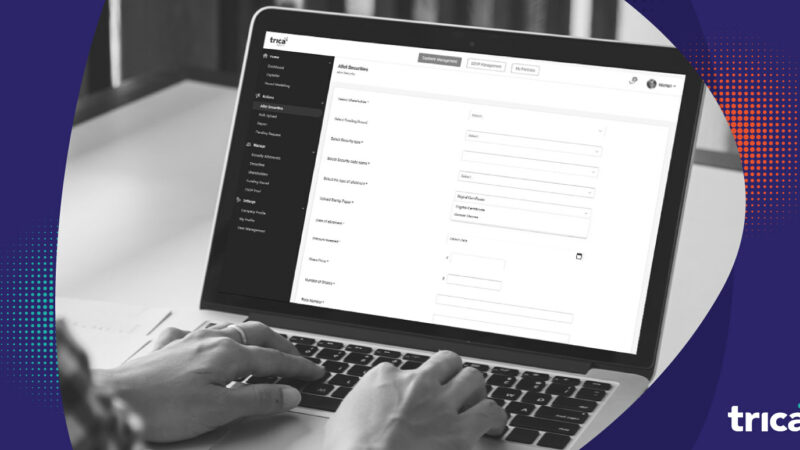
Equity Term Sheet: What Is It and How to Prepare One?
If you are a budding entrepreneur, you will know that finding investors who believe in your business idea, have the financial ability, and willingness to invest in your business is an arduous task. However, once you find one, you need to safeguard your interest and commit to those who are ready to invest their hard-earned money into your business. An Equity Term Sheet can do this. So what is it? And how to prepare one? Keep reading to find out.
Understanding Equity Term Sheets
This section aims to explain the meaning, components, and features of an equity term sheet.
What is an Equity Term Sheet?
An equity term sheet (or simply ‘term sheet’) is essentially an agreement between an investor and an entrepreneur. It lays out the terms and conditions which define and construe the agreement. Alejandro Cremades, the author of The Art of Startup Fundraising, says that [perfectpullquote align=”full” bordertop=”false” cite=”” link=”” color=”” class=”” size=””]“The term sheet is the document that lays out the terms of the investment and collateral. First, it details what you as the start-up are giving and what you are getting in return. Then it lays out the guidelines of how both parties will act to protect the investment.”[/perfectpullquote]
Purpose of Equity Term Sheet
The purpose of an equity term sheet is twofold:
- To unambiguously state the terms and conditions of the agreement between the investor and the founder. This can be a reference point for future discussions too.
- To protect both parties from the possibility of fraudulent behavior.
The parties must ensure that the equity term sheet contains all the necessary details and clauses agreed upon for these objectives to be met.
Components of an Equity Term Sheet
A term sheet must expressly state the definitive details of the agreement, such as the parties involved and the percentage of ownership that the investors acquire, and the amount of investment.
The components and complexity of an equity term sheet increase as the number of funding rounds and the age of the startup increase. The following are the details that every term sheet must include:
- Information about the parties: Names, addresses, contact information, relevant background details, and the roles that they play concerning the deal.
- The quantum of funds to be invested, whether it is a bullet transaction or not, and if not, the stages, timelines, and the funds that flow from the investor to the startup in each transaction, the number of shares offered, and the share price.
- The stake which the investor purchases; the percentage, the rights, particularly relating to voting, the involvement in the company’s operations that the stake entitles the investor to, and constraints on the transfer of such ownership that arises through investing in the startup.
- The duties and obligations of each party at different stages of the transaction, mandatory disclosures, the onus of due diligence, and the remedial action in case of a breach.
- Clauses that explain what will happen to the investor’s stake in case of corporate events (like a merger or winding up).
- Other clauses and information that both parties deem necessary to be included in the equity term sheet.
- Signatures of both parties, without which the term sheet will not be meaningful.
Legal Enforceability
The key feature of an equity term sheet is that it is not legally binding on either of the parties. However, if they wish to do so, they can include a clause in the term sheet that makes it legally binding, print the agreement on a stamp paper, and get it duly notarized and signed by the concerned parties.
Preparing an Equity Term Sheet
Now that we know what a term sheet is and what goes into it, let us prepare one. Broadly, it involves the three-step process explained below. However, alterations might be necessary, depending on the individual situation.
Step 1: Negotiation
The first and most crucial step is to negotiate the terms and conditions of the business deal. Other than the investment amount and percentage of ownership that are exchanged, the rights and responsibilities of each party and the action to be taken in case a contingent event materializes has to be discussed in detail.
Negotiation Points for Entrepreneurs:
An inexperienced entrepreneur might be ready to sign a term sheet that is highly skewed in favor of the investor. Here are three important points that an entrepreneur must review and negotiate before finalizing the document:
- A stake large enough to overrule or even oust the founder.
- Harsh covenants/restrictions on further fundraising through debt or equity.
- Too short an investment horizon.
Step 2: Drafting
Once the terms and conditions are finalized, the equity term sheet needs to be drafted properly. While online templates are available, it is highly recommended to consult a specialist who knows the industry practices well and can integrate these with an entrepreneur’s specific situations to create a customized yet resilient term sheet. Click here for a sample term sheet.
Step 3: Finalising
Once the term sheet is drafted, a final review must be done by both parties, and changes or corrections must be made. If the investor and entrepreneur have decided to make the term sheet legally binding, the necessary steps must be taken.
A founder will find it incredibly beneficial to integrate the equity term sheet with their startups’ capabilities. It will be easy and insightful to view the business deal’s long-term impact and understand how potential changes in the terms and conditions will affect the startup’s financial health. Click here to know how cap tables can benefit you further.
Do you want to simplify the process of creating an equity term sheet? Having a cap table in place can be a handy source of information for doing so. It can also shed light on what your equity statement will look like during and after the investment. trica’s scenario modeling tool can help you plan and negotiate better.
Click here to know more about our cap table and how you can benefit from trica. Book a demo today!
ESOP & CAP Table
Management simplified
Get started for free





